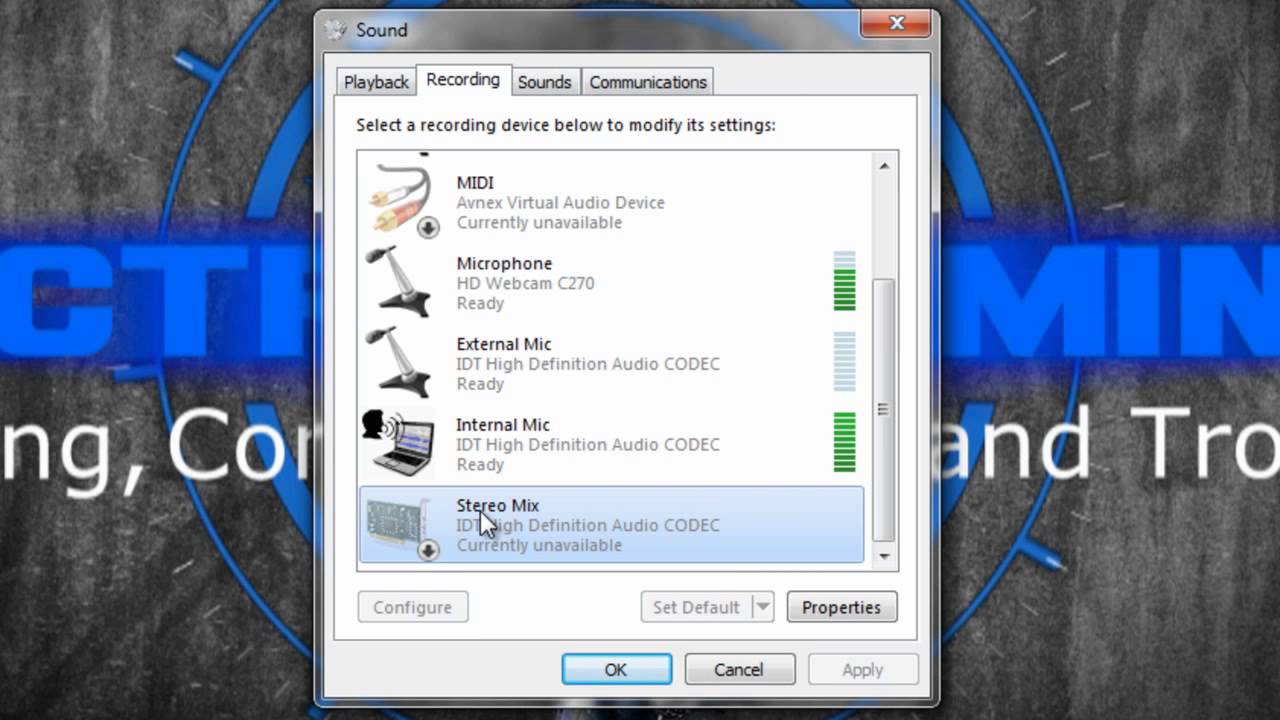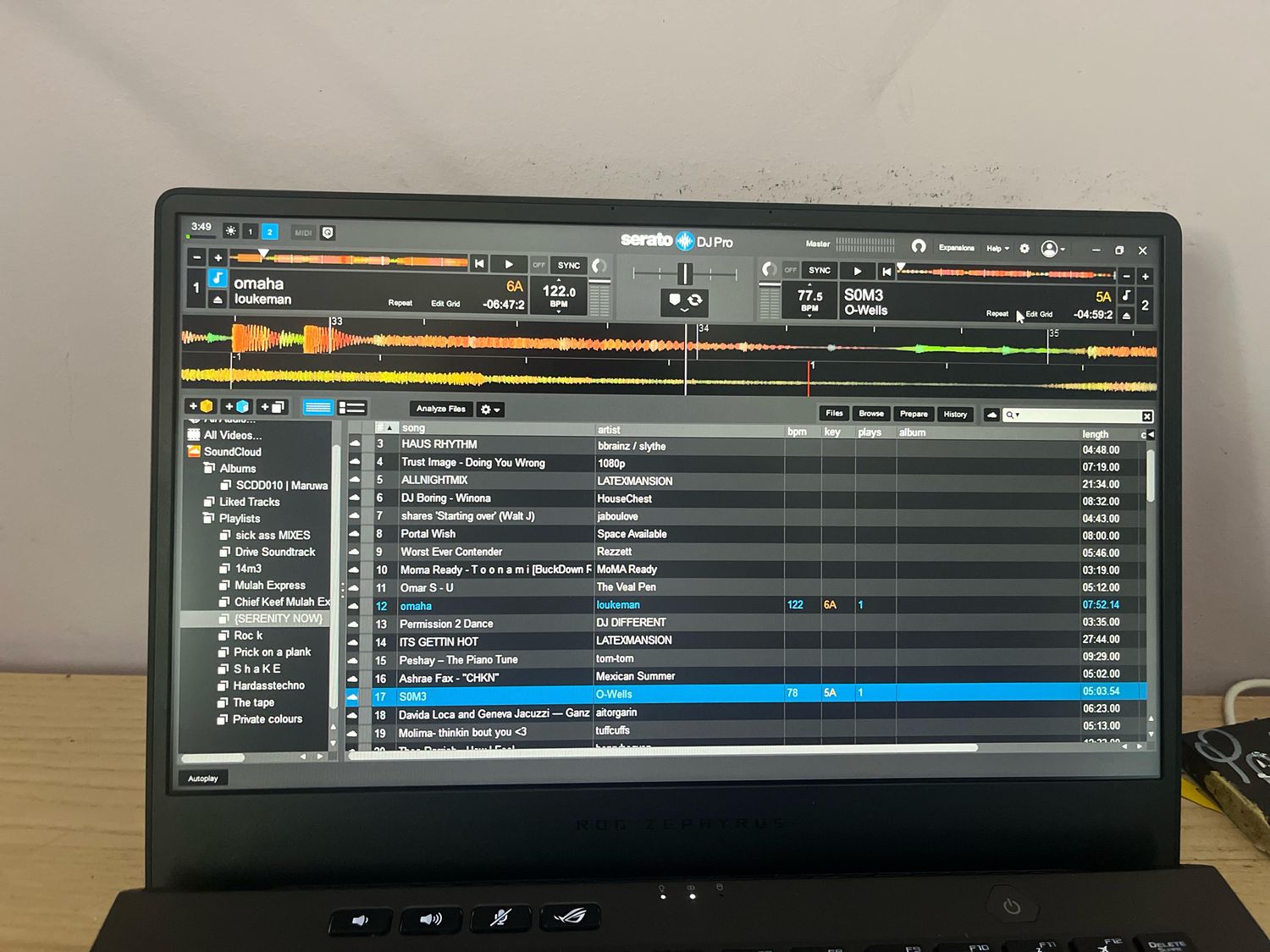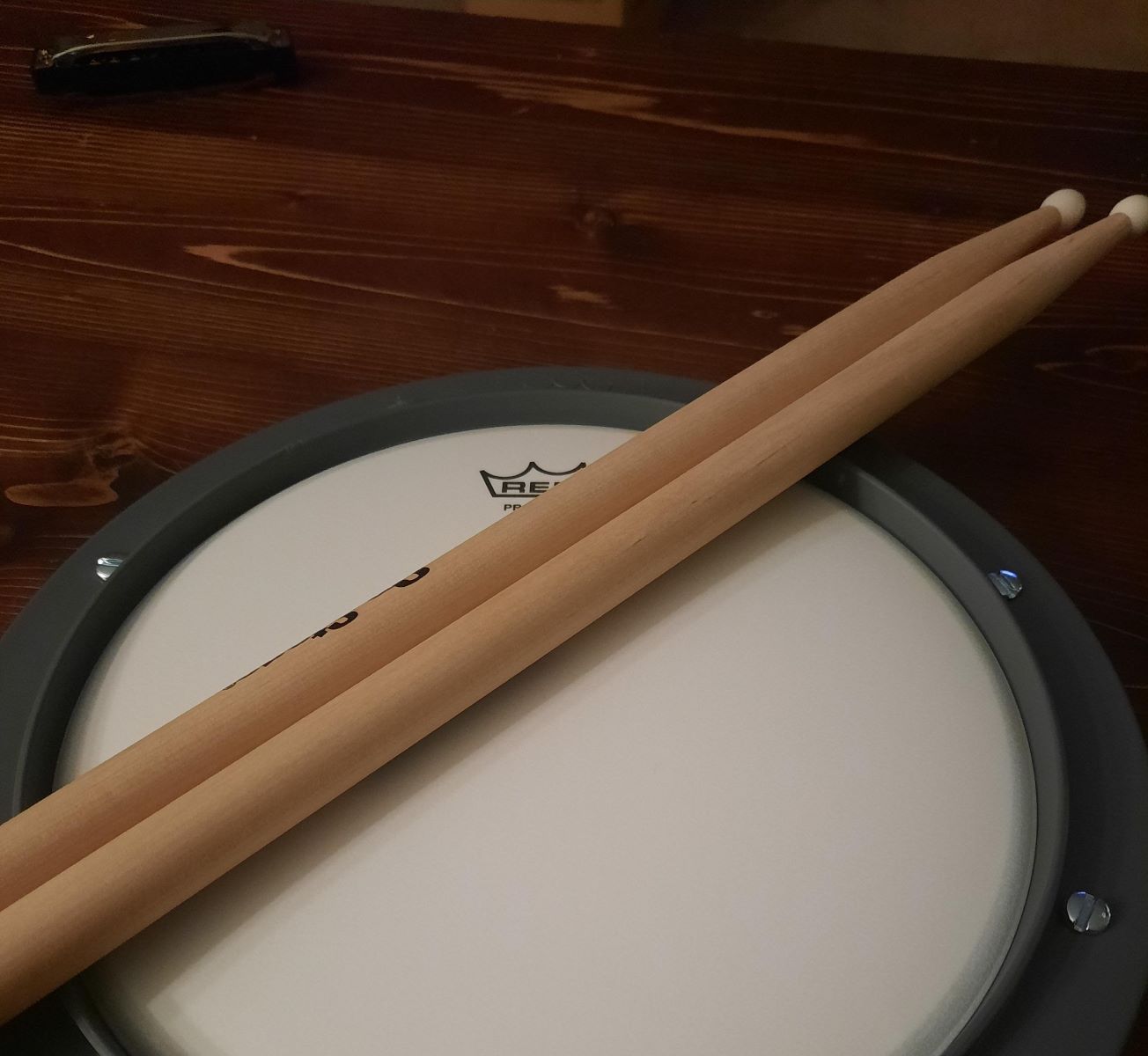Home>Instruments>Drums>How To Mix Drums


Drums
How To Mix Drums
Published: February 7, 2024
Learn how to mix drums like a pro with our comprehensive guide. Discover essential tips and techniques for achieving the perfect drum sound.
(Many of the links in this article redirect to a specific reviewed product. Your purchase of these products through affiliate links helps to generate commission for AudioLover.com, at no extra cost. Learn more)
Table of Contents
Introduction
When it comes to music production, the drums play a pivotal role in shaping the overall sound and feel of a track. Whether it's the thunderous kick drum driving the rhythm, the snappy snares cutting through the mix, or the shimmering cymbals adding depth and texture, getting the drum mix just right is essential for a professional and impactful sound.
In the world of audio engineering, the process of mixing drums is both an art and a science. It requires a keen understanding of the individual components of a drum kit, as well as the technical prowess to manipulate sound using various tools and techniques. From balancing the different elements of the drum kit to applying equalization and compression, every step in the drum mixing process contributes to the final sonic result.
In this comprehensive guide, we will delve into the intricacies of drum mixing, exploring the fundamental principles and advanced methods used by audio engineers and producers to achieve a polished and dynamic drum sound. Whether you're a seasoned professional looking to refine your drum mixing skills or a newcomer eager to learn the ropes, this guide will provide valuable insights and practical tips to elevate your drum mixes to new heights.
So, grab your drumsticks and let's dive into the fascinating world of drum mixing, where rhythm meets innovation and sonic possibilities are endless. Whether you're aiming for a punchy and aggressive drum sound for a rock anthem or a tight and controlled groove for a pop hit, mastering the art of drum mixing will empower you to sculpt the perfect rhythmic foundation for any musical masterpiece.
Understanding Drum Mixing
Drum mixing involves the process of blending and enhancing the individual components of a drum kit to create a cohesive and impactful sound. It encompasses a range of techniques and considerations aimed at achieving clarity, punch, and balance within the overall mix. Understanding the role of each drum element and how they interact with one another is crucial for crafting a compelling and dynamic drum sound.
At the core of drum mixing is the recognition of the primary components of a standard drum kit, including the kick drum, snare drum, toms, hi-hats, cymbals, and various percussion instruments. Each element contributes unique sonic characteristics and rhythmic textures, and it’s essential to appreciate their individual sonic profiles and how they integrate into the broader musical arrangement.
Moreover, understanding the genre and style of music being produced is paramount in drum mixing. Different musical genres demand distinct approaches to drum mixing, whether it’s the thunderous and explosive drum sound in rock and metal or the tight and controlled groove in pop and electronic music. Adapting the drum mix to suit the specific sonic requirements of a given genre is fundamental for achieving an authentic and engaging sound.
Furthermore, drum mixing involves a keen awareness of the spatial and dynamic aspects of the drum kit. This includes considerations such as stereo imaging, room ambience, and the overall impact of the drums within the mix. By manipulating these spatial and dynamic elements, a skilled audio engineer can imbue the drum mix with depth, energy, and a sense of presence that elevates the entire musical production.
Ultimately, understanding drum mixing encompasses a holistic grasp of the sonic, rhythmic, and textural intricacies of the drum kit, as well as the ability to adapt and tailor the drum mix to suit the stylistic and sonic requirements of the music being produced. It’s a nuanced and dynamic process that forms the rhythmic backbone of any musical composition, and mastering it is essential for achieving professional and captivating drum mixes.
Preparing the Drum Tracks
Before diving into the intricacies of drum mixing, it’s essential to ensure that the drum tracks are properly prepared to facilitate a smooth and efficient mixing process. This preparation phase lays the foundation for achieving a polished and cohesive drum sound, allowing for greater control and flexibility during the subsequent mixing stages.
The first step in preparing the drum tracks is to organize and label each individual drum component within the digital audio workstation (DAW). This includes clearly identifying the kick drum, snare drum, toms, hi-hats, cymbals, and any additional percussion instruments. By organizing the tracks in a logical and systematic manner, the mixing engineer can easily access and manipulate each drum element as needed.
Furthermore, it’s crucial to address any potential issues with the recorded drum tracks before commencing the mixing process. This involves tasks such as editing out any unwanted noise or bleed, aligning the transients of the drum hits for precise timing, and addressing any phase issues that may affect the overall cohesiveness of the drum sound. Additionally, ensuring that the drum tracks are properly gain staged and free from clipping or distortion is essential for maintaining signal integrity and preventing unwanted artifacts during mixing.
Another vital aspect of preparing the drum tracks is to establish a clear and consistent sonic vision for the drum mix. This involves communicating with the producer or artist to understand their creative preferences and sonic expectations for the drum sound. By aligning the mixing approach with the artistic vision for the music, the engineer can tailor the drum mix to suit the specific stylistic and emotive requirements of the composition.
Moreover, preparing the drum tracks also involves creating an organized and efficient session layout within the DAW. This includes grouping related drum tracks, setting up bus routing for parallel processing, and creating custom templates or presets for commonly used processing chains. By streamlining the technical aspects of the mixing session, the engineer can focus more on the creative and artistic aspects of crafting a compelling drum mix.
In essence, preparing the drum tracks sets the stage for a successful and productive drum mixing process. By organizing, addressing technical issues, aligning with artistic vision, and optimizing the session layout, the engineer can approach the subsequent mixing stages with clarity, purpose, and a solid foundation for achieving a professional and impactful drum sound.
Balancing the Drum Kit
One of the fundamental aspects of drum mixing is achieving a well-balanced and cohesive sound across the various components of the drum kit. Balancing the individual elements, such as the kick drum, snare, toms, hi-hats, and cymbals, is essential for creating a harmonious and impactful drum mix that serves as the rhythmic foundation of the music.
The first step in balancing the drum kit involves establishing a clear hierarchy of the drum elements based on their sonic importance within the mix. Typically, the kick drum and snare drum take precedence, as they provide the primary rhythmic drive and impact. The toms, hi-hats, and cymbals are then balanced in relation to the kick and snare, ensuring that each element contributes to the overall groove and energy of the drum mix without overpowering or conflicting with the core rhythmic components.
Furthermore, achieving a balanced drum mix also involves considering the dynamic and tonal relationships between the individual drum elements. This includes adjusting the relative levels of the close mic’d drum tracks to capture the desired tonal character and impact of each drum component. Additionally, balancing the stereo image of the overhead and room mic recordings plays a crucial role in shaping the spatial and ambient characteristics of the drum mix, adding depth and dimension to the overall sound.
Moreover, the process of balancing the drum kit extends beyond simply adjusting volume levels. It also encompasses fine-tuning the panning of the individual drum tracks to create a sense of space and separation within the stereo field. By strategically placing each drum element within the stereo spectrum, the engineer can enhance clarity and definition within the drum mix, allowing the listener to discern the distinct sonic characteristics of each drum component.
Additionally, achieving a balanced drum mix involves considering the frequency relationships between the different drum elements. This includes addressing potential masking or frequency clashes that may arise when multiple drum components occupy similar frequency ranges. By applying selective equalization and dynamic processing, the engineer can carve out space for each drum element within the frequency spectrum, ensuring that the overall mix remains clear, punchy, and well-defined.
In essence, balancing the drum kit is a foundational step in the drum mixing process, laying the groundwork for a cohesive, dynamic, and engaging drum sound. By establishing a clear hierarchy, addressing tonal and dynamic relationships, fine-tuning spatial placement, and managing frequency interactions, the engineer can sculpt a well-balanced drum mix that serves as the driving force behind a compelling and professional musical production.
EQ and Compression for Drums
Equalization (EQ) and compression are two indispensable tools in the arsenal of a mixing engineer when sculpting the sound of a drum kit. These processing techniques allow for precise shaping of the tonal characteristics, dynamic range, and overall impact of the individual drum elements, contributing to a polished and cohesive drum mix.
When applying EQ to drums, it’s essential to consider the sonic profile of each drum component and tailor the equalization settings to enhance its unique characteristics. For example, the kick drum may benefit from a boost in the low-frequency range to accentuate its weight and impact, while the snare drum might require adjustments in the midrange to bring out its body and presence. Similarly, the toms, hi-hats, and cymbals can be sculpted using EQ to achieve clarity, definition, and tonal balance within the drum mix.
Moreover, EQ can be used to address frequency masking and conflicts between different drum elements, ensuring that each component occupies its own sonic space within the mix. By applying subtractive EQ techniques to remove unwanted resonances or frequencies that muddy the drum sound, the engineer can enhance the clarity and separation of the individual drum tracks, resulting in a more articulate and impactful drum mix.
Complementing the role of EQ, compression plays a crucial role in shaping the dynamic range and transient impact of the drum kit. When applying compression to drums, the engineer can control the attack and sustain of the drum hits, ensuring a consistent and powerful sound throughout the mix. For instance, using compression on the kick drum can help emphasize its punch and solidity, while applying it to the snare drum can enhance its snap and presence.
Furthermore, employing parallel compression techniques allows for the creation of dynamic and punchy drum sounds by blending the compressed and uncompressed signals. This approach can add energy and impact to the drum mix, particularly when aiming for a larger-than-life drum sound that cuts through the mix with authority and clarity.
Additionally, multiband compression can be utilized to target specific frequency ranges within the drum mix, addressing tonal imbalances and dynamic inconsistencies across different drum elements. This advanced compression technique provides a nuanced approach to sculpting the overall tonal and dynamic characteristics of the drum kit, resulting in a more polished and professional sound.
In summary, EQ and compression are powerful tools for shaping the sound of a drum kit, allowing the mixing engineer to enhance tonal characteristics, manage dynamic range, and craft a cohesive and impactful drum mix. By applying these processing techniques with precision and artistry, the engineer can elevate the drum sound to new heights, contributing to the overall sonic excellence of the musical production.
Adding Effects to the Drums
Introducing effects to the drum mix is a creative and essential aspect of the mixing process, allowing the engineer to imbue the drum sound with depth, dimension, and sonic character. From reverb and delay to saturation and modulation, a carefully selected array of effects can elevate the drum mix, adding a sense of space, excitement, and texture to the overall sound.
Reverb is a particularly versatile effect that can enhance the spatial characteristics of the drum kit, adding a sense of ambience and depth to the individual drum elements. By applying reverb to the snare drum, for example, the engineer can create a sense of space and dimension, adding a lush tail to the snare hits that contributes to the overall sense of depth within the mix. Similarly, using reverb on the overhead and room mic tracks can infuse the drum sound with a sense of air and liveliness, enhancing the overall sonic impact of the kit.
Delay is another powerful effect that can be utilized to add rhythmic interest and movement to the drum mix. By applying subtle delay to the hi-hats or cymbals, the engineer can introduce a sense of groove and momentum, enhancing the rhythmic interplay within the drum kit. Additionally, using delay on the snare drum can create a sense of spaciousness and depth, adding a compelling sense of movement and energy to the drum sound.
Furthermore, saturation and distortion effects can be employed to add warmth, grit, and harmonically rich textures to the drum mix. By subtly saturating the kick drum, for instance, the engineer can enhance its presence and impact, adding a sense of warmth and depth to the low-end frequencies. Similarly, applying distortion to the snare drum can introduce a raw and aggressive edge, contributing to a more intense and dynamic drum sound.
Modulation effects, such as chorus and flanger, offer creative opportunities to add movement and color to the drum mix. By applying chorus to the toms, the engineer can create a sense of width and movement, enhancing the spatial characteristics of the drum kit. Flanger, on the other hand, can be used to add a sense of swirling motion and dynamic interest to specific drum elements, contributing to a more vibrant and engaging drum sound.
Incorporating effects into the drum mix is a nuanced and creative process that allows the engineer to shape the sonic character and spatial dimensions of the drum kit. By judiciously applying reverb, delay, saturation, and modulation effects, the engineer can imbue the drum sound with depth, movement, and texture, contributing to a compelling and immersive listening experience.
Finalizing the Drum Mix
As the drum mixing process nears completion, the finalizing stage involves fine-tuning and refining the drum mix to ensure that it seamlessly integrates with the overall musical production. This critical phase encompasses various tasks aimed at enhancing the cohesiveness, impact, and sonic excellence of the drum sound, ultimately contributing to a professional and captivating musical experience.
One of the key aspects of finalizing the drum mix is ensuring that the individual drum elements blend harmoniously with the other instruments in the arrangement. This involves critically assessing the interaction between the drums, bass, guitars, keyboards, and vocals, and making subtle adjustments to ensure that the drum sound complements and supports the overall musical vision. By refining the balance and tonal relationships between the drums and other instruments, the engineer can create a cohesive and unified sonic landscape that enhances the impact of the entire mix.
Moreover, the finalizing stage involves addressing any remaining technical issues within the drum mix, such as adjusting the overall tonal balance, refining the stereo imaging of the drum kit, and ensuring that the dynamics of the drum sound are consistent and compelling. This may involve making subtle EQ adjustments to address tonal imbalances, refining the panning of individual drum elements to create a sense of space and separation, and applying subtle dynamic processing to enhance the overall impact and energy of the drum mix.
Additionally, the engineer may choose to revisit the application of effects within the drum mix during the finalizing stage. This could involve reassessing the levels and settings of reverb, delay, saturation, and modulation effects to ensure that they contribute to the desired spatial and textural characteristics of the drum sound without overpowering or distracting from the musical arrangement. By fine-tuning the application of effects, the engineer can enhance the depth, movement, and sonic richness of the drum mix, elevating it to a professional and polished standard.
Furthermore, the finalizing stage provides an opportunity to critically evaluate the overall impact and emotive quality of the drum sound within the mix. This involves listening to the drum mix in the context of the entire production, assessing its contribution to the rhythmic drive, energy, and emotional resonance of the music. By refining the nuances and subtleties of the drum sound, the engineer can ensure that it serves as a compelling and integral component of the musical composition.
In essence, finalizing the drum mix is a meticulous and critical phase that encompasses refining the balance, addressing technical considerations, reassessing the application of effects, and evaluating the overall impact of the drum sound within the mix. By approaching this stage with precision and attentiveness, the engineer can elevate the drum mix to a professional and captivating standard, ensuring that it enhances the sonic excellence and emotive power of the entire musical production.
Conclusion
Drum mixing is a multifaceted and dynamic process that lies at the heart of crafting compelling and impactful musical productions. From shaping the thunderous kick drum to accentuating the shimmering cymbals, the art of drum mixing demands a blend of technical expertise, creative vision, and a deep understanding of the rhythmic intricacies that underpin the music.
Throughout this guide, we’ve explored the fundamental principles and advanced techniques involved in the art of drum mixing, delving into the nuances of balancing, equalization, compression, and the creative application of effects to sculpt a professional and captivating drum sound. We’ve discussed the importance of preparing and organizing the drum tracks, understanding the sonic characteristics of each drum element, and tailoring the drum mix to suit the stylistic and sonic requirements of the music being produced.
Furthermore, we’ve highlighted the pivotal role of EQ and compression in shaping the tonal and dynamic characteristics of the drum kit, as well as the creative potential of effects such as reverb, delay, saturation, and modulation in adding depth, movement, and texture to the drum sound. We’ve also emphasized the significance of finalizing the drum mix, refining the balance, addressing technical considerations, reassessing the application of effects, and evaluating the overall impact of the drum sound within the mix.
As we conclude this exploration of drum mixing, it’s important to recognize that mastering the art of drum mixing requires a blend of technical proficiency, creative intuition, and a passion for sonic excellence. Whether you’re an aspiring audio engineer, a seasoned producer, or a dedicated musician, the ability to craft a compelling and professional drum mix is an invaluable skill that can elevate the impact and emotive power of your musical creations.
Ultimately, drum mixing is an art form that demands a deep appreciation for rhythm, sonic texture, and spatial dynamics, as well as a commitment to continuous learning and experimentation. By embracing the principles and techniques outlined in this guide and applying them with creativity and precision, you can embark on a journey to refine your drum mixing skills and unleash the full rhythmic potential of your musical productions.
So, as you embark on your drum mixing endeavors, remember to approach the process with an open mind, a discerning ear, and a relentless pursuit of sonic excellence. Whether you’re sculpting the thunderous pulse of a rock anthem, the infectious groove of a pop hit, or the intricate rhythms of an experimental composition, the art of drum mixing offers boundless opportunities to shape the rhythmic heartbeat of your music and captivate audiences with compelling and impactful sonic experiences.











